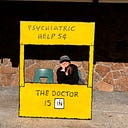Member-only story
Writegeist
The Secret to Writing Satisfying Fictional Heroes
The call to adventure doesn’t make the hero; how they respond is what transforms an ordinary character into a true protagonist in their own story.
Why do we read novels? Why do they captivate us? Why do we connect with books on a deeper level? To connect to a story is to connect to the characters and to the author who created them. One reason is to discover other perspectives outside of our own. Another is to mirror our own perspective and gain insights. In many ways, novels tell us who we are and who we are not.
We all want to be identified as the hero of our own story — one with power and agency to choose and act, not just to be chosen.
The hero’s and heroine’s journeys
The Hero’s Journey and the Heroine’s Journey are both narrative structures that outline the typical stages a protagonist goes through in a story. The Hero’s Journey, popularized by Joseph Campbell, is a universal narrative pattern found in myths, legends, and stories across cultures. It typically involves a hero leaving their ordinary world, facing challenges and trials, undergoing personal transformation, and returning home changed. Campbell coined the term “monomyth” in his book “The Hero with a Thousand Faces” to describe the common elements present in myths and stories worldwide. It refers to the concept of a single, universal story pattern found in various cultures and narratives.
On the other hand, the Heroine’s Journey, popularized by writers like Gail Carriger, emphasizes different aspects of the protagonist’s journey, particularly focusing on themes of self-discovery, intuition, and reclaiming feminine power. It often involves the heroine leaving her known world, confronting inner and outer obstacles, seeking connection and support, and ultimately integrating her experiences into her life.
While the hero of Campbell’s journey sets off alone to face personalized, solitary trials in order to become…

